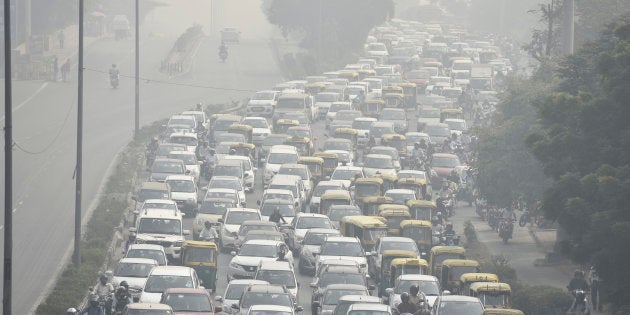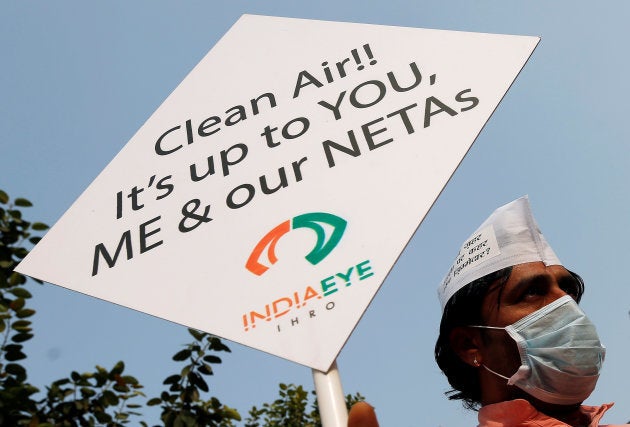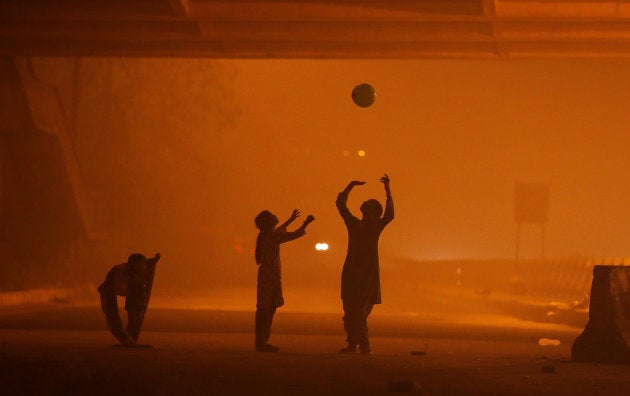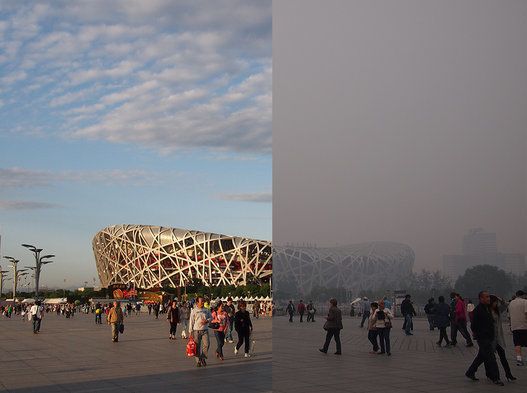
Did the firecracker ban imposed by the Supreme Court of India on Delhi-NCR, ahead of Diwali this year, turn out to be a case of sound and fury signifying nothing?
The answer to this question depends as much on the empirical data as on public perception, especially of those living in the region and forced to breath the polluted air there through the year, and worse, during the most toxic autumnal and winter months.
Let's begin with the data.
According to reports, the Central Pollution Control Board reported that pollution levels in Delhi are lower compared to the air quality recorded during Diwali in 2016. The Air Quality Index (AQI) value on Thursday was 319, or in the very poor category category. Contrast this number with last year's AQI, which hit severe level after recording an index value of 431.
SAFAR, or System of Air Quality and Weather Forecasting And Research, found that the 24-hour average of PM2.5 and PM10, ultra-fine particulate matters that can enter the human bloodstream, were 154 and 256 micrograms per cubic metre, respectively, at around 11 pm. Both these numbers are at least 10-20 times the permissible limits for such pollutants in the air.
Of course, in certain parts of Delhi, the levels were much higher, with PM2.5 and PM10 crossing 800 and 1,000 micrograms per cubic metre around the same time in RK Puram.
Delhi's RK Puram at 978(Hazardous) on Air Quality Index #AQIpic.twitter.com/nYNGFcginM
— ANI (@ANI) October 20, 2017
HT reported that in Punjabi Bagh, PM10 reached 1,600 microgram per cubic metre at midnight, while in Mandir Marg it touched 1,046 microgram per cubic metre at 1 AM.
While the public anticipation of a cleaner Diwali that was set by the Supreme Court banning the sale of firecrackers on 9 October wasn't entirely thwarted, its efficacy depended on the communal efforts of a neighbourhood in different pockets of the city.
The firecracker ban, irrespective of its success, revealed one fundamental truth: nothing works better than collective will to change and group effort.
Pre-Diwali readings of the air pollution did raise the overall optimism, a feeling that extended well into the day of the festival of lights. But matters started getting out of hand from late evening into the night.
Social media users reported a gradual escalation of the burning of firecrackers as Diwali reached its peak, causing a layer of smog to descend on the city by the end of the night.
#delhipollution yes, it was a better #diwali this year despite having existing #pollution issue thanks #SupremeCourt@SCofInd in #delhi
— Amit Gupta (@amitgupta301279) October 20, 2017
Delhi people know ways to fool their government even after the cracker ban...no shame in killing the environment.. #Diwali#delhipollution
— Jason Serrao (@JasonKP) October 20, 2017
The Supreme Court-appointed Environment Pollution Prevention and Control Authority is empowered to enforce the Graded Response Action Plan (GRAP) to combat air pollution in Delhi and its surrounding areas.
GRAP has taken several laudable steps, such as banning diesel generator sets in Delhi-NCR until 15 March 2018 apart from stopping the sale of firecrackers before Diwali, their effect has been, at best, limited.
But that's hardly surprising. The extent of damage, wrought by poor public policy and its inability to control vehicular pollution in the city, can hardly be undone by a week's work.
Successive governments in the state of Delhi, including the current one under Arvind Kejriwal, have tried to stem the rot by various means. The odd-even rule for vehicular transport imposed a couple of years ago for instance only partially succeeded in reducing air pollution and caused inconvenience to commuters in the NCR.

Politicising the firecracker ban has not helped either.
While the embargo put businesses, especially the small and medium ones, under immense pressure, it is also true that the injunction applied only to the selling of firecrackers — not to buying and brining these items in from outside the jurisdiction of the state or to burning them.
As Sandip Roy pointed out in HuffPost India, the principle behind the firecracker ban related directly to the right to clean air, which is part of the right to life, mandated by the Constitution of India. It's deplorable if not outright nefarious to connect it to a narrative of Hindu victimhood, as the right-wing, including writer Chetan Bhagat, did on social media.
Tajinder Bagga, spokesperson of the ruling Bharatiya Janata Party (BJP) from Delhi, went a step further by distributing firecrackers among children, taking advantage of the wording in the Supreme Court's order, as it only prohibited the sale of the products, not dissemination.
Since the burning of crops by farmers in Haryana and Punjab lead to air pollution around this time of the year in Delhi-NCR, many are of the opinion that the firecracker ban is pointless unless the states are able to stop these farm fires.

In another article on HuffPost India, Shivam Vij said, "It is not reasonable to argue that if we are unable to stop farm fires, Diwali firecrackers must be allowed to pollute the air as well." As case studies show, farm fires alone do not causing the heavy cover of smog over Delhi. Those who deny or underplay the correlation between firecrackers and air pollution are merely perpetuated an insidious perspective.
Unfortunately, the cost of such petty politicking is apparent from the numbers. Here's a piece of (hopefully terror-inducing) news for those who are aggrieved by the firecracker ban or flouted it with impunity: India recently topped the list of countries with pollution-related deaths in 2015, according to a report by Lancet, the medical journal.
As many as 2.51 million people in the country have died prematurely that year due to diseases linked to air, water and other forms of pollution. India accounted for about 28% of an estimated 9 million pollution-linked deaths worldwide in 2015, as the study further found.
If these numbers fail to jolt the public into becoming more conscious of the damage they are causing to the environment, as also to the generations to come, no court order or state ban can hope to have any lasting impact on us either.
Also on HuffPost
